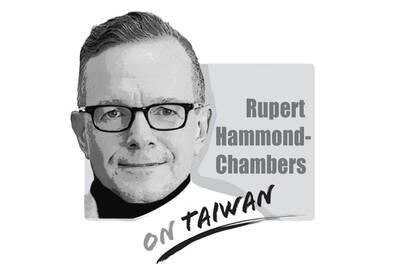Bill Sterling was big in import-export, the chief executive officer of his own multimillion-dollar business with a loyal customer base and high product demand that earned him 90 percent profit margins and 19 years in the Texas prison system.
But with his drug-trafficking career long behind him and his release approaching, Sterling, 58, ended last Tuesday night on the basketball court behind the barbed-wire fences of the minimum security Hamilton Unit here buttonholing visiting business titans and investors about his latest venture.
"I'd like to standardize the making of `No Child Left Behind' tests," he said.

Sterling and several hundred fellow inmates in white short-sleeve uniforms were competing for a cherished slot in the Prison Entrepreneurship Program, a two-year-old effort that capitalizes on their penchant for creative self-employment (and meager job prospects on the outside).
The Texas program, which is expected to expand soon to California, was started by Catherine Rohr, a young venture capitalist inspired by the prison ministry of the former Watergate conspirator Charles Colson. It offers an intense four-month business curriculum, matching participants with volunteers from the corporate world, some of whom have had their own scrapes with the law.
"Many of you were dope dealers, we give you credit for that -- you're already entrepreneurs," Rohr, 29, said in welcoming candidates for the fourth and latest class of up to 100 students.
The class was scheduled to begin last night with an English test based on The Associated Press Stylebook. To be chosen for it, inmates cannot be sex offenders and must fill out a 23-page questionnaire. They must also offer credible business aspirations and show evidence of "heart."
Among the graduates with testimonials was Kenneth Broderick, 47, who said he got out in November after 16-and-a-half years and is now the proud owner of a shipping brokerage, Resource Freight Logistics.
"Today's a gift," Broderick said, beaming. "That's why they call it the present."
Since the program began in 2004 at another Texas prison before settling in at this prerelease facility of 1,200 men near Texas
A&M University and about 161km northwest of Houston, 165 inmates have graduated. Only four have been sent back to prison -- a far better percentage than the usual 69 percent recidivist rate, Rohr said. They get help buying business attire, finding loans, housing and medical care and consulting with business professionals.
"I think of it as God's work," said Rohr, who gave up a lucrative career as a private equity investor in California and New York before moving to Houston with her husband, a lawyer (the night they arrived, their van was broken into and many of their belongings stolen, an event Rohr shrugs off).
The Prison Entrepreneurship Program (pepweb.org), which is based in Houston, raised US$342,000 in donations last year and hopes for US$1.5 million this year. It got a boost here on Tuesday night when one executive pledged a US$50,000 contribution. About 600 executives have signed up to volunteer their services.
It is a good return on investment, Rohr said. It costs US$3,700 a year to put an inmate through the Prison Entrepreneurship Program, and US$22,000 to keep him in prison.
Cheering on former cellmates was Patric Weaver, 33, who got out last month after 38 months behind bars.
"I was a National Merit Scholar," Weaver said. "I was also an interstate drug trafficker."
"The penitentiary saved me," he said, crediting the entrepreneurship program with helping him start his Houston business, Strong-Arm Canine, which keeps guard dogs on their toes by testing them with simulated break-ins and assaults.
"We're essentially live bait," he said. "I wear a bite suit."
A graduate of the first class, Brent Taylor, 23, had done 18 months for robbery, and said he was now earning US$120,000 a year selling used vehicles.
"Everybody here has an `X' on their back -- but you can do it," Taylor said.
After serving six years in prison for distribution and possession of cocaine, Lafayette Moore, 52, said he was building home gyms in customers' spare rooms with the motto: "Why drive to the gym if you can work out in your own personal fitness room?"
Among the two dozen executives and MBAs who signed up to meet with the inmates was Dan Rouse, owner of a large heavy-equipment leasing company in Dallas, who confessed a personal interest.
"I have a 23-year-old at home who's a recovering crack addict," Rouse said. "We have to stop the vicious cycle of drugs eating our children."
Chuck May, owner of a Dallas consulting firm, said his daughter had repeatedly spent time in prison for drugs.
"I know what it means," May told the inmates.
But he said he had recently shared the stage with the billionaire investor Boone Pickens, who readily admitted to many failures.
"If you haven't failed," May said, "you don't qualify."
Two of the executives who showed up on Tuesday night had spent time behind bars, Rohr said.
Some prisoners seemed close to tears, saying it was their first happy experience with the Texas Department of Criminal Justice.
"Man, I get emotional; this is something I've never seen," said an inmate with 25 years behind bars who gave his name as Amarillo.
Sterling, the ex-drug dealer turned test maker, said the program sounded almost too good to be true.
"I'm thinking there's some kind of ulterior motive," he said. "Maybe I've been here too long."
Among the inmates who ended the evening crowding around the businessmen for advice, hoping the program would take them on, was Byron Maddox, 55, who said he was getting out of prison after 30 years and five months for murder and robbery.
Maddox said he was hoping to start a leather and furniture business with a highly placed partner.
"God's a miracle worker," he said.

In the past month, two important developments are poised to equip Taiwan with expanded capabilities to play foreign policy offense in an age where Taiwan’s diplomatic space is seriously constricted by a hegemonic Beijing. Taiwan Foreign Minister Lin Chia-lung (林佳龍) led a delegation of Taiwan and US companies to the Philippines to promote trilateral economic cooperation between the three countries. Additionally, in the past two weeks, Taiwan has placed chip export controls on South Africa in an escalating standoff over the placing of its diplomatic mission in Pretoria, causing the South Africans to pause and ask for consultations to resolve
An altercation involving a 73-year-old woman and a younger person broke out on a Taipei MRT train last week, with videos of the incident going viral online, sparking wide discussions about the controversial priority seats and social norms. In the video, the elderly woman, surnamed Tseng (曾), approached a passenger in a priority seat and demanded that she get up, and after she refused, she swung her bag, hitting her on the knees and calves several times. In return, the commuter asked a nearby passenger to hold her bag, stood up and kicked Tseng, causing her to fall backward and
In South Korea, the medical cosmetic industry is fiercely competitive and prices are low, attracting beauty enthusiasts from Taiwan. However, basic medical risks are often overlooked. While sharing a meal with friends recently, I heard one mention that his daughter would be going to South Korea for a cosmetic skincare procedure. I felt a twinge of unease at the time, but seeing as it was just a casual conversation among friends, I simply reminded him to prioritize safety. I never thought that, not long after, I would actually encounter a patient in my clinic with a similar situation. She had
A recent trio of opinion articles in this newspaper reflects the growing anxiety surrounding Washington’s reported request for Taiwan to shift up to 50 percent of its semiconductor production abroad — a process likely to take 10 years, even under the most serious and coordinated effort. Simon H. Tang (湯先鈍) issued a sharp warning (“US trade threatens silicon shield,” Oct. 4, page 8), calling the move a threat to Taiwan’s “silicon shield,” which he argues deters aggression by making Taiwan indispensable. On the same day, Hsiao Hsi-huei (蕭錫惠) (“Responding to US semiconductor policy shift,” Oct. 4, page 8) focused on